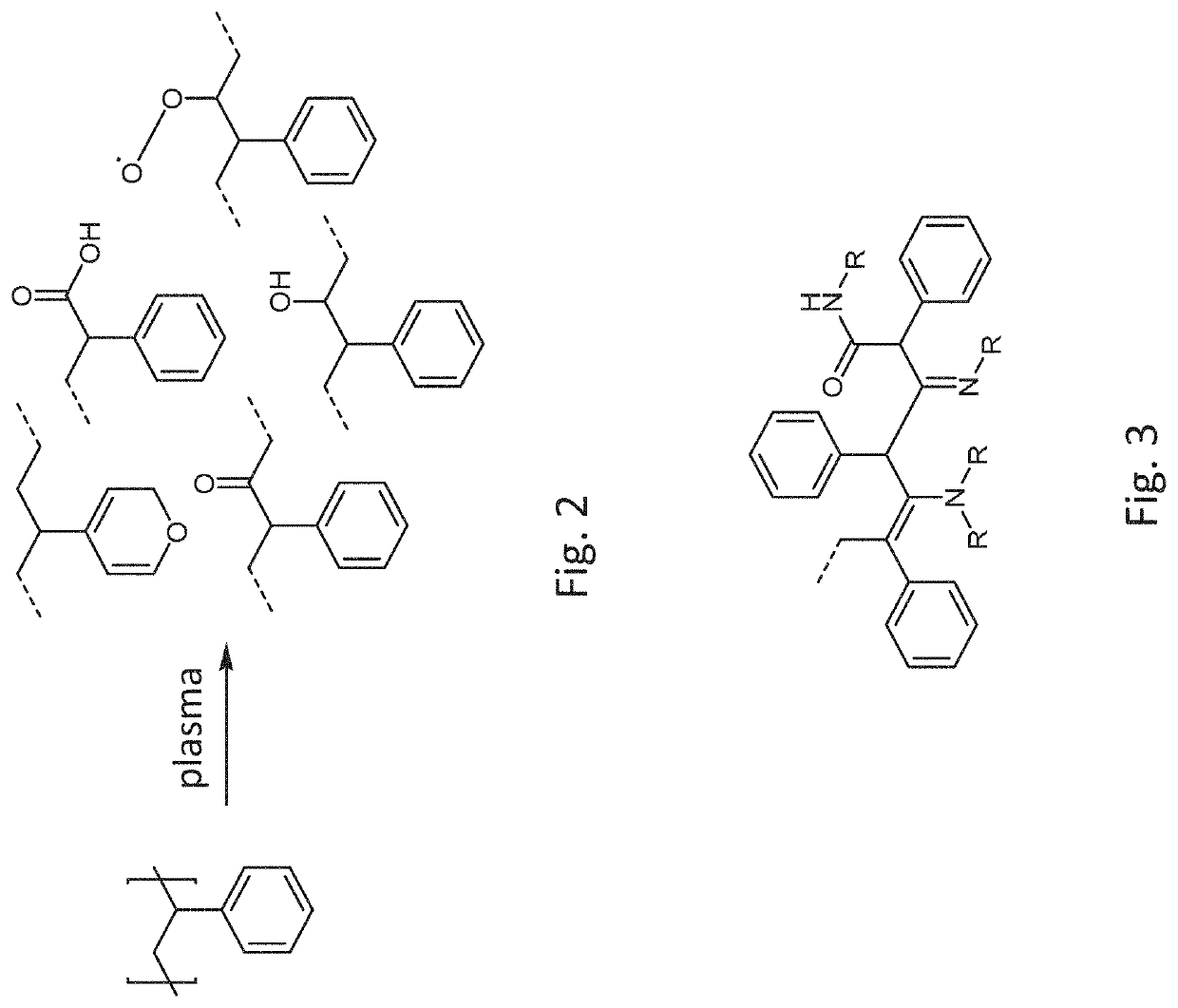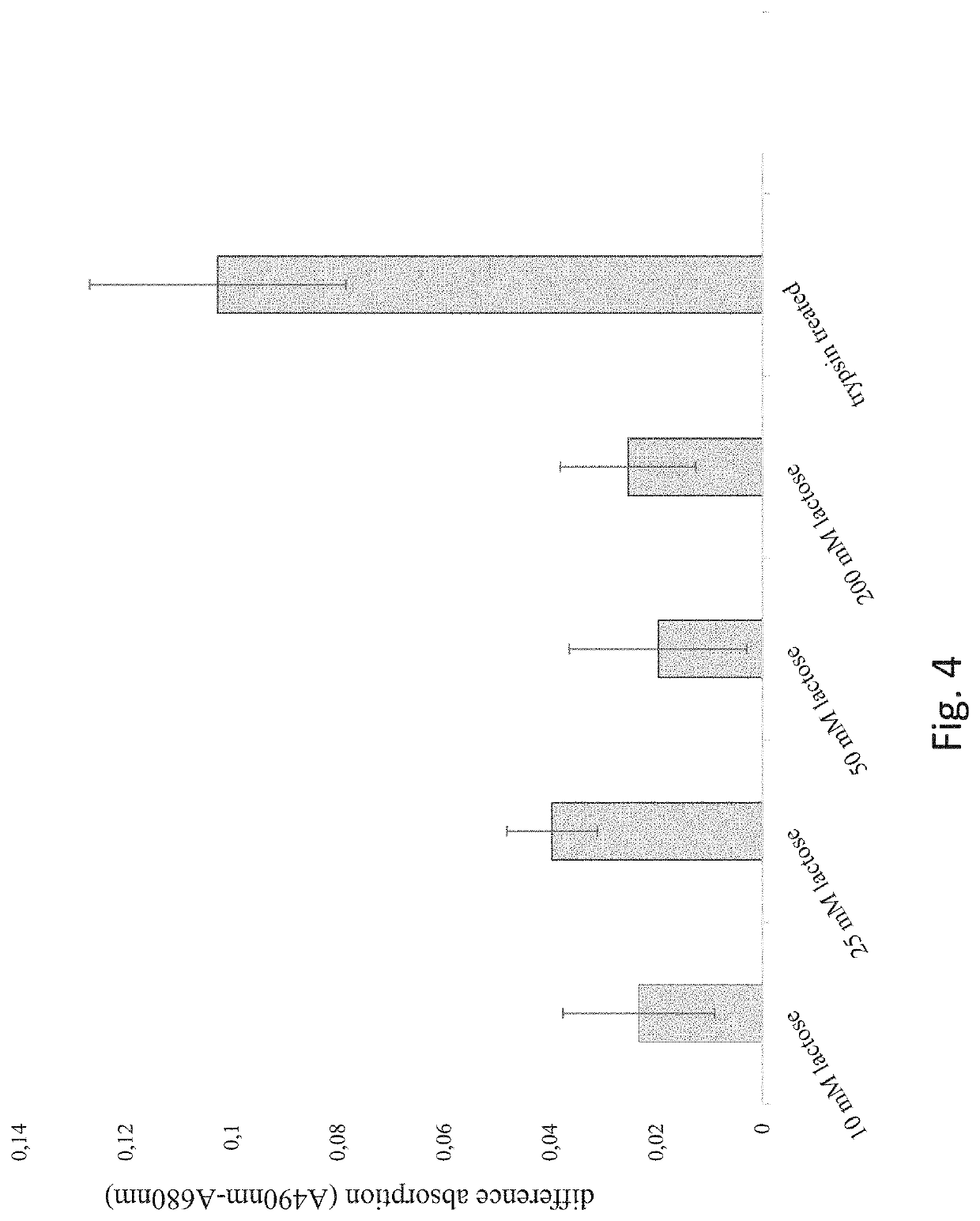Cell culture substrate for cultivating adherent cells
a cell culture substrate and substrate technology, applied in general culture methods, biochemistry apparatus and processes, microbiology, etc., can solve the problems of cell stress, slow cell growth, culture death,
- Summary
- Abstract
- Description
- Claims
- Application Information
AI Technical Summary
Benefits of technology
Problems solved by technology
Method used
Image
Examples
embodiment examples
[0065]In the following, examples of syntheses of some polymer saccharide conjugates will be presented.
Lactose PEI:
[0066]Polyethylene imine solution (Mn ˜60,000 GPC (gel permeation chromatography), Mw ˜750,000 LS (light scattering spectroscopy), 50 wt. % in water) (PEI, 20 g, 0.1667 mmol) and D-lactose monohydrate (38.028 g, 105.5 mmol, 5 eq. per ideal repeat unit of PEI) are dissolved in MeOH (70 mL) and 50 mM sodium tetraborate solution (aq) (100 mL) and heated to 60° C. Once the components had completely dissolved, the system was cooled down again and the pH was set to a value of 3 with formic acid. NaBH3CN (33.148 g, 527.5 mmol, 5 eq. based on lactose) was dissolved in MeOH (30 mL) and added to the system in 6 portions. The reaction took place for 2 h at 60° C. Subsequently, the MeOH was removed in vacuo and the solution was dialyzed via a cellulose membrane (exclusion limit 10 kDa) and freeze-dried.
Maltose PEI:
[0067]PEI (10.286 g; see above) and maltose monohydrate (27.124 g, 75...
PUM
| Property | Measurement | Unit |
|---|---|---|
| temperature | aaaaa | aaaaa |
| temperature | aaaaa | aaaaa |
| wavelength | aaaaa | aaaaa |
Abstract
Description
Claims
Application Information
 Login to View More
Login to View More - R&D
- Intellectual Property
- Life Sciences
- Materials
- Tech Scout
- Unparalleled Data Quality
- Higher Quality Content
- 60% Fewer Hallucinations
Browse by: Latest US Patents, China's latest patents, Technical Efficacy Thesaurus, Application Domain, Technology Topic, Popular Technical Reports.
© 2025 PatSnap. All rights reserved.Legal|Privacy policy|Modern Slavery Act Transparency Statement|Sitemap|About US| Contact US: help@patsnap.com



